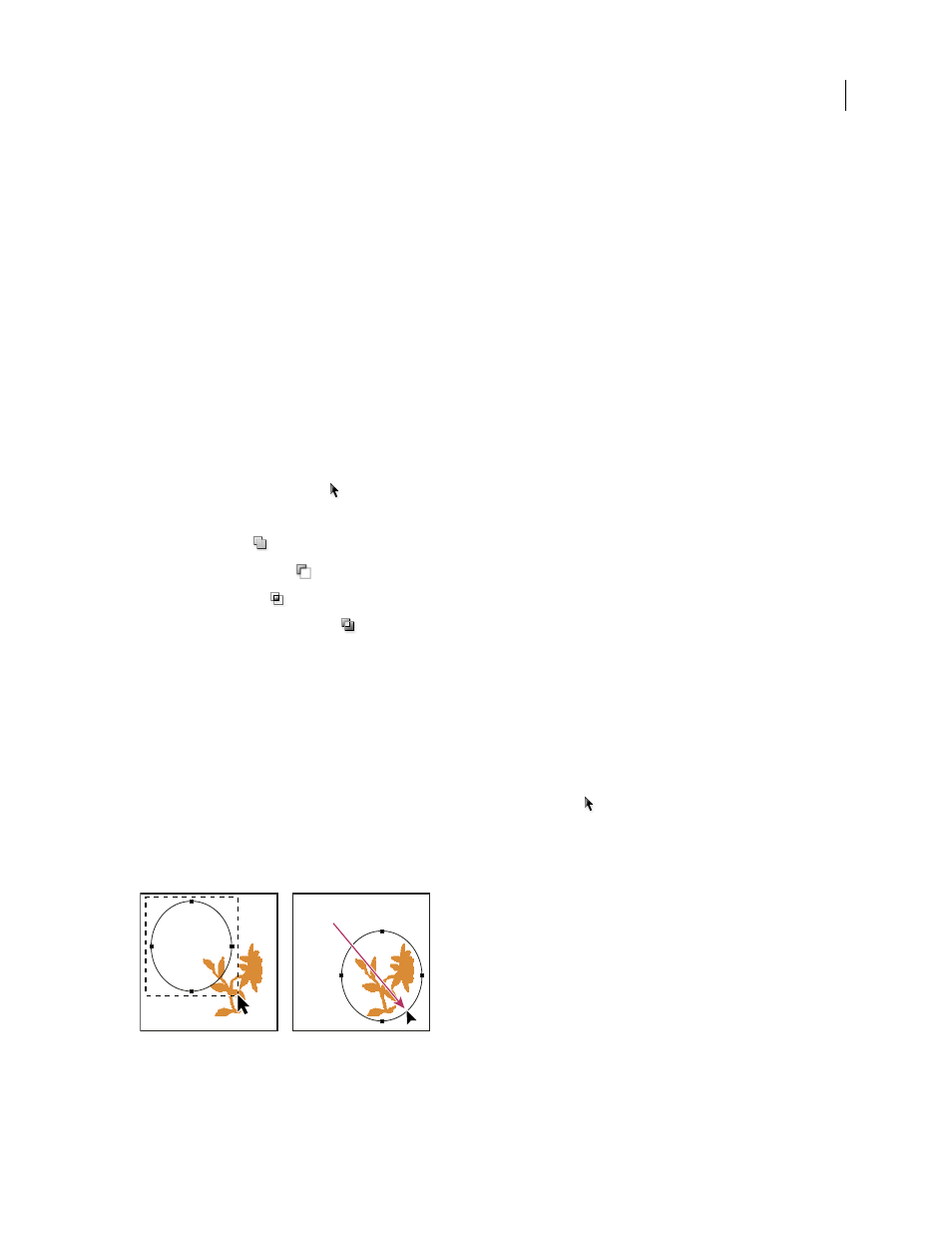Adjust path components – Adobe Photoshop CS3 User Manual
Page 382

PHOTOSHOP CS3
User Guide
375
Note: In Illustrator and InDesign, you can change the distance of a nudge by changing the Keyboard Increment
preference. When you change the default increment, holding down Shift nudges 10 times the specified distance.
Adjust path components
You can reposition a path component (including a shape in a shape layer) anywhere within an image. You can copy
components within an image or between two Photoshop images. Using the Path Selection tool, you can merge
overlapping components into a single component. All vector objects, whether they are described by a saved path,
work path, or vector mask, can be moved, reshaped, copied, or deleted.
You can also use the Copy and Paste commands to duplicate vector objects between a Photoshop image and an image
in another application, such as Adobe Illustrator.
See also
“Path segments, components, and points” on page 371
Change the overlap mode for the selected path component
1
Using the Path Selection tool
, drag a marquee to select existing path areas.
2
Choose a shape area option in the options bar:
Add To Shape Area
Adds the path area to overlapping path areas.
Subtract From Shape Area
Removes the path area from overlapping path areas.
Intersect Shape Areas
Restricts the area to the intersection of the selected path area and overlapping path areas.
Exclude Overlapping Shape Areas
Excludes the overlap area.
Show or hide the selected path component
Do one of the following:
•
Choose View > Show > Target Path.
•
Choose View > Extras. This command also shows or hides a grid, guides, selection edges, annotations, and slices.
Move a path or path component
1
Select the path name in the Paths palette, and use the Path Selection tool
to select the path in the image. To
select multiple path components, Shift-click each additional path component to add it to the selection.
2
Drag the path to its new location. If you move any part of a path beyond the canvas boundaries, the hidden part
of the path is still available.
Dragging a path to a new location
Note: If you drag a path so that the move pointer is over another open image, the path is copied to that image.
